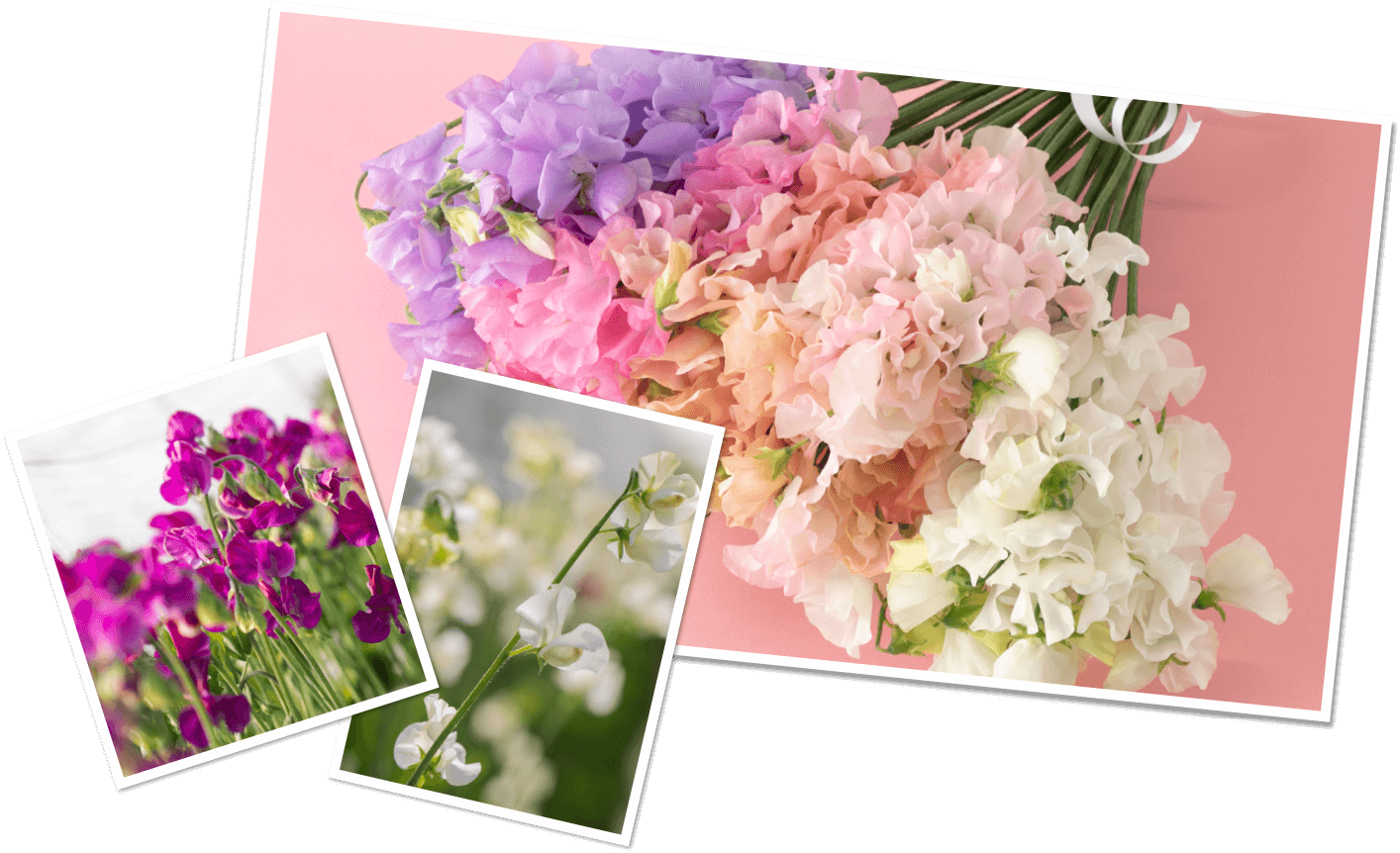
- “Painted Lady” and “Flower Crayon”
These names are sometimes used, inspired by the rich variety of flower colors.
With its fragrant, elegant wavy petals, it is loved by people around the world as the “spring fairy.”





“Starting out,” “Departing,” “Tender memories,” etc.
The names were inspired by the vibrant, frilled petals, which evoke the image of butterflies taking flight.
The sweet pea originates from Sicily, Italy.
The wild species has small flowers, typically a purplish-blue color resembling the sky.
It was discovered in the late 17th century, and in the 19th to 20th centuries, the species was improved in England.
As the variety of flower colors increased and the petals became larger, the sweet pea became so popular as a spring celebration flower that it was even chosen as the ceremonial flower for coronations at the British royal court.
The flower was introduced to Japan during the late Edo period.
In Japan, it is called Jako-renrisou, meaning.
Sweet peas thrive in dry, sunny weather.
They are very sensitive to sunlight, and if cloudy weather lasts for three days, the lack of sunlight can cause the buds to drop.
They are also vulnerable to high temperatures, so careful temperature management is essential.
As a leguminous plant, they grow vigorously, much like the beanstalk in the story of Jack and the Beanstalk.
Sweet peas planted in September can grow to an impressive height of about 5 meters by the following April!

January 21st
Established by the Japan Sweet Pea Association (of which our farm is a member) in 2017.
This date was chosen because sweet peas are at their most beautiful and fragrant around this time, and because the flower has three symmetrical petals (the banner petal, wing petals, and keel petal) with one, two, and one petal respectively, forming “121.
Additionally, January 21st, 1982, is also the release date of Seiko Matsuda’s song “Akai Sweet Pea” (Red Sweet Pea)♪
We deliver freshly harvested sweet peas directly from our farm.
Harvest season: November to the end of March
(Note: Flowering in November and December may be irregular depending on the weather conditions of the year.)
(For details on the start and end dates of the harvest and shipment, please contact us.)